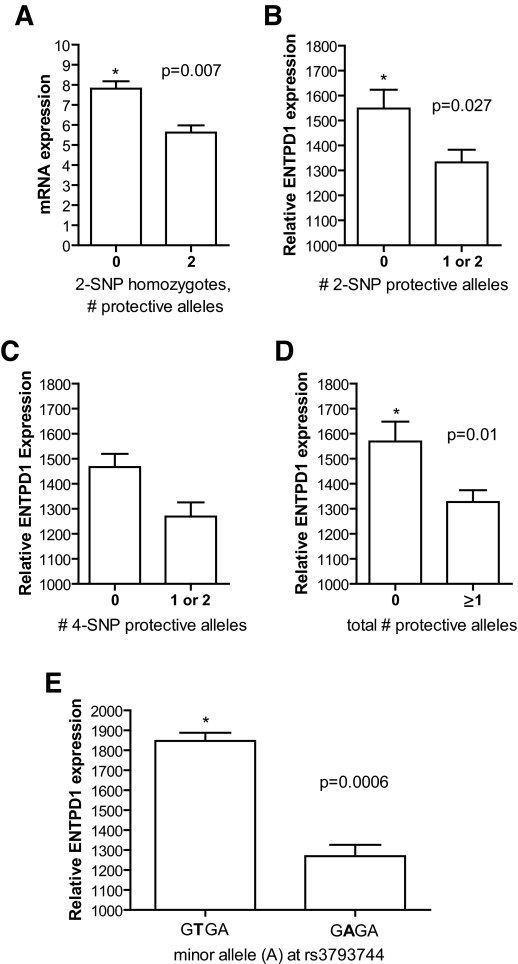FIG. 1.
A: ENTPD1 mRNA expression by real-time PCR comparing YRI Hapmap cell lines homozygous for the two-SNP risk haplotype AG (n = 7) versus the protective haplotypes AA and TG (n = 3), normalized for 18S expression. ENTPD1 mRNA levels are 39% higher in cell lines with zero protective haplotypes than in cell lines with two protective haplotypes. B: In silico ENTPD1 expression for YRI cell lines with zero (n = 31) versus one or two (n = 29) copies of the two-SNP protective haplotypes AA and TG. Zero copies of the protective haplotype conferred 16% higher levels of ENTPD1 expression. C: ENTPD1 expression for YRI cell lines with zero (n = 53) versus one or two (n = 7) copies of the four-SNP protective (GAGA) haplotype. Zero copies of the protective haplotype were associated with 16% higher ENTPD1 expression. Though nonsignificant, cell lines with one or two protective copies had lower expression than all other groups tested. D: Protective index incorporating both the two- and four-SNP haplotypes. The total number of protective two- and four-SNP protective alleles was summed for each cell line. Cell lines with zero protective alleles (n = 29) had 18% more ENTPD1 expression than cell lines with at least one protective allele (n = 31). E: Comparison of ENTPD1 mRNA expression of protective four-SNP haplotype (GAGA, n = 7) and uncommon four-SNP haplotype (GTGA, n = 3) that share the minor allele (A) at rs3793744 that codes for a valine to isoleucine substitution at amino acid 293. The difference indicates that rs3793744 is not itself the causal SNP.

